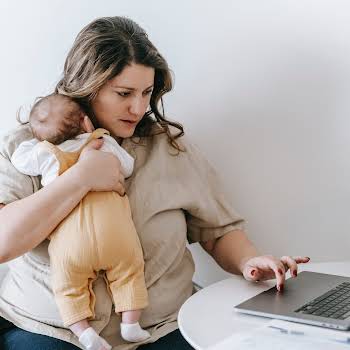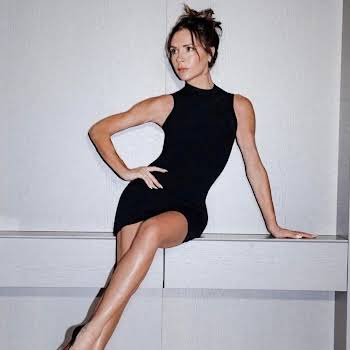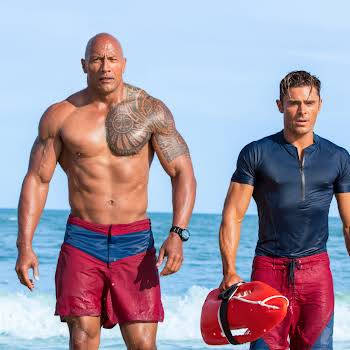By Sophie White
10th Nov 2017
10th Nov 2017
The rise of body positivity has seen representation of bigger bodies grow but media messaging and fashion brands are still driving an agenda that prizes one kind of body over another says Sophie White
It’s 2015 and I’m watching a video on Instagram. The hashtag says Don’t Hate The Shake but I can’t help it: I am hating the shake. I am on Instagram watching a fat girl in her underwear dancing in her bedroom. She’s the naked one but it’s me being exposed. In my discomfort and my disgust — I’ve been exposed as fat phobic.
In our own minds, none of us are judgmental, so it was with some shock that I realised I am a fat-phobic person. “She could at least be wearing prettier underwear,” I huffed inwardly. But then I thought “why?”. Why does she need to be modifying herself in any way to please me or anyone else? Turmoil. I hate this but I’m fascinated. I’m judging her, yet a part of me is jealous. Clearly, she not only accepts herself, she loves herself.
I have an average-sized body. By conventional metrics (the now largely outmoded BMI), I may look like the healthier human but every obsessive, mind-polluting thought of what I’m putting in my mouth and numbers on the running app and numbers on the scales tell a different story.
Now, of course, I feel ashamed of my fatphobia, but I also feel what hope do we have of not being fat phobic when the first time we are introduced, as women, to our inherent need to be ‘fixed’ is as young as five or six. I remember it vividly: my cousin pointed out that my thighs looked fatter when I was sitting relaxed on the bench, but if I didn’t rest my legs all the way down, they appeared thinner. And so began 20 years of holding myself just so and for what?
The body positivity movement has had a few iterations since the 7os, but lately, it has exploded with social media platforms, especially Instagram, providing a huge stage for BoPo activists to promote the ideals of the movement: self-acceptance and self-love. Proponents of BoPo preach divorcing our sense of self-worth from our appearance and accepting our bodies without the caveats of aesthetic improvements. Following these enlighted and inspiring women has made a huge difference to my outlook, it has made me re-examine so much of my own disordered behaviours around food and the devastating affect negative messaging has on women.
With BoPo becoming mainstream, society has started to take notice. High street retailers began to invest in their plus size clothing, producing trend-driven garments like belly tops and jumpsuits instead of the traditional, culturally-sanctioned silhouettes that bigger people “could” wear. At times, however, this can feel a bit like paying lip-service rather than any true investment in their plus size client base – the plus ranges often do not extend beyond a size 22 or 24, meanwhile brands like H&M have removed the upper end of the ‘straight’ sizes thus further excluding women with larger bodies. Even styling plus size fashion shoots is problematic, with samples of bigger sizes being much harder to arrange than straight sizes.
Publishing and advertising industries have caught up to some degree, plus size models like Ashley Graham appeared on the cover of Sports Illustrated last year. However, as ‘enlightened’ a move as that was supposed to be, it didn’t feel like much of a win for the average fat person. Ashley Graham is, at the end of the day, the ‘right’ kind of fat or as social psychologist Sarah Murnen dubbed it the ‘curvaceous ideal’. And here’s where my issue with the word ‘curvy’ lies. It feels like exchanging one aesthetic oppression for another.
Graham may be larger but she still has a flat stomach and large breasts. It’s large made palatable for the mainstream. I think what really first highlighted this hypocrisy that lies at the heart of the mainstream’s supposed acceptance of big women, was the backlash Lena Dunham’s body received when Girls first aired and people were furious. Dunham first started prancing around on her TV show five years ago, forcing us to look at a fat ass without the side of big tits and a tiny waist that we’ve come to expect of an acceptable ‘curvy’ body. And a lot of people were incensed.
Earlier this year, an Irish broadcaster called out Topshop for appropriating the word ‘curvy’ and slapping it on a picture of some notably slim models.
You have got to be shitting me, Zara. pic.twitter.com/tiOsJv5AVy
— Muireann O’Connell (@MuireannO_C) February 28, 2017
It’s incredible that in 2017, we’re still seeing brands and influencers adopt the word ‘curvy’ inappropriately in a desperate bid to jump on the female empowerment bandwagon.
Even beyond inappropriate use, the word itself is still alienating to women. Instead of being inclusive to all kinds of bodies, it is still suggestive of the “right” kind of fatness.
The word ‘representation’ may be to 2017, what ’empowerment’ was to 2016 (it’s easy to eye-roll about representation and empowerment when you personally are not in need of it) but just because the words are now ubiquitous does not mean that we need these things any less.
Now that we’re curating our own visual culture through Instagram, Tumblr and blogs, I have high hopes for the next generation. Thanks to the smart, engaged women I follow on social media I now love and respect the shake. The shake is shaking things up.
Just don’t call me curvy, from now on I will be reclaiming lumpy as my go-to body descriptor.
Main image via Mango























